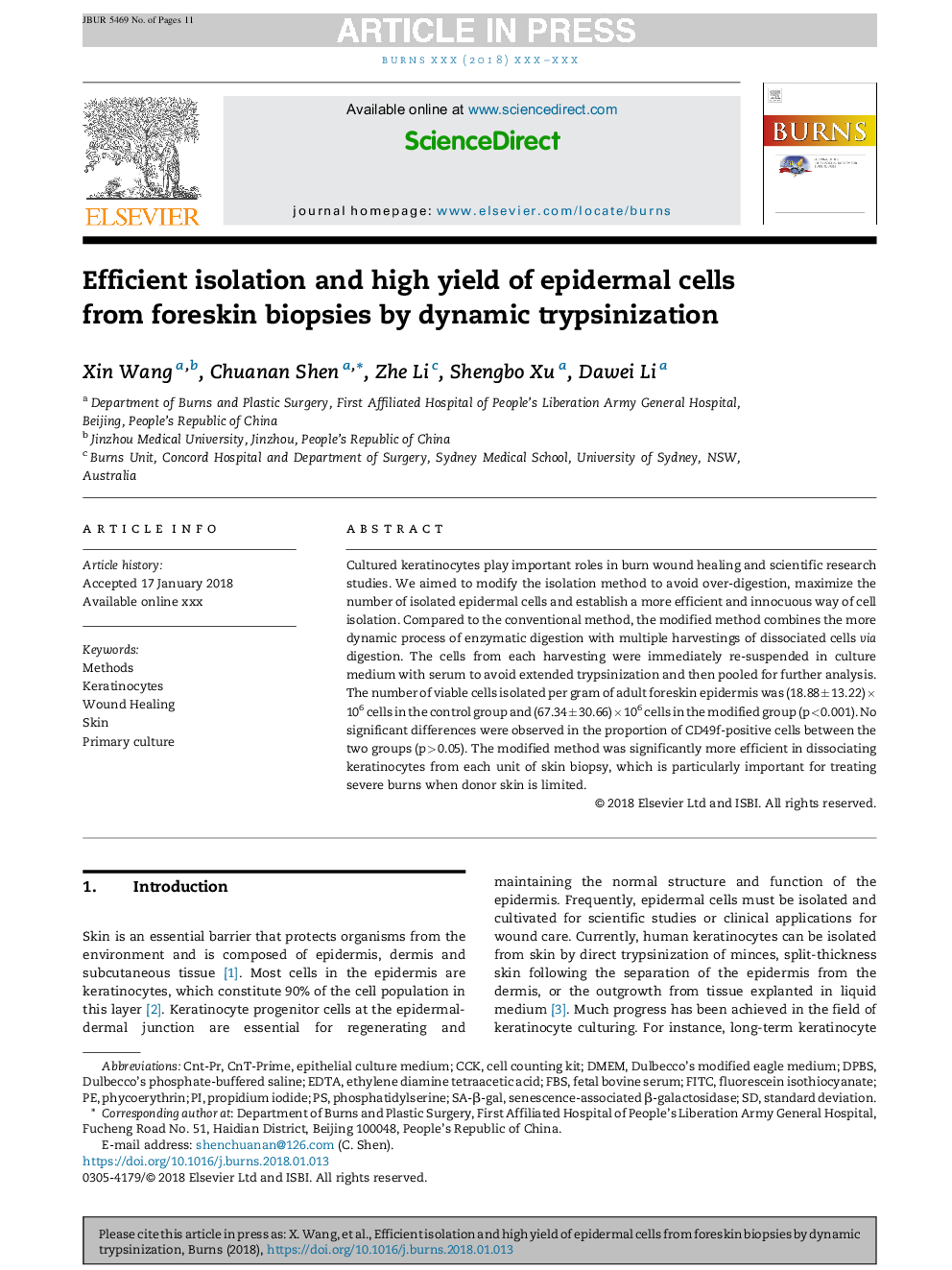| Article ID | Journal | Published Year | Pages | File Type |
|---|---|---|---|---|
| 8694563 | Burns | 2018 | 11 Pages |
Abstract
Cultured keratinocytes play important roles in burn wound healing and scientific research studies. We aimed to modify the isolation method to avoid over-digestion, maximize the number of isolated epidermal cells and establish a more efficient and innocuous way of cell isolation. Compared to the conventional method, the modified method combines the more dynamic process of enzymatic digestion with multiple harvestings of dissociated cells via digestion. The cells from each harvesting were immediately re-suspended in culture medium with serum to avoid extended trypsinization and then pooled for further analysis. The number of viable cells isolated per gram of adult foreskin epidermis was (18.88 ± 13.22) Ã 106 cells in the control group and (67.34 ± 30.66) Ã 106 cells in the modified group (p < 0.001). No significant differences were observed in the proportion of CD49f-positive cells between the two groups (p > 0.05). The modified method was significantly more efficient in dissociating keratinocytes from each unit of skin biopsy, which is particularly important for treating severe burns when donor skin is limited.
Keywords
DPBSSA-β-galCCKFITCFBSDMEMDulbecco’s modified Eagle mediumsenescence-associated β-galactosidaseEDTAethylene diamine tetraacetic acidWound Healingstandard deviationfetal bovine serumphycoerythrinPrimary culturedulbecco’s phosphate-buffered salinePhosphatidylserinefluorescein isothiocyanateMethodsPropidium iodideSkinKeratinocytescell counting kit
Related Topics
Health Sciences
Medicine and Dentistry
Critical Care and Intensive Care Medicine
Authors
Xin Wang, Chuanan Shen, Zhe Li, Shengbo Xu, Dawei Li,
